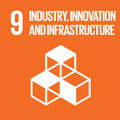- Docente: Alessandro Vanelli Coralli
- Credits: 9
- SSD: ING-INF/03
- Language: Italian
- Moduli: Alessandro Vanelli Coralli (Modulo 1) Alessandro Vanelli Coralli (Modulo 2)
- Teaching Mode: In-person learning (entirely or partially) (Modulo 1); In-person learning (entirely or partially) (Modulo 2)
- Campus: Bologna
-
Corso:
First cycle degree programme (L) in
Electronics and Telecommunications Engineering (cod. 9065)
Also valid for Second cycle degree programme (LM) in Electrical Energy Engineering (cod. 9066)
Learning outcomes
The course aims at laying the foundation for the design and characterization of modern digital wireless communication systems, giving the basic elements of random processes, statistical models of noise, spectrum of random digital signals, digital modulations, optimum decision criteria, receiver architecture, error rate analysis.
Course contents
Part 1
- Random processes
- Statistical description of random processes
- Stationary processes, ergodic processes
- Properties of the autocorrelation function for WSS random processes
- LTI transformations of random processes
- Gaussian random processes
- Cyclostationary and cycloergodic processes
- Applications: spectral analysis of random digital signals.
- The background noise
- Thermal noise
- Noise in linear systems
- Available power of a source, available gain of a device
- Equivalent noise temperature, noise figure
- Noisy temperature of a cascade of elements
- The system temperature and the white Gaussian additive noise
- The signal-to-noise ratio
- Principles of Bayesian decision theory for the detection of a waveform embedded in noise
- Principles of Bayesian estimation theory
Part 2
- The communication systems.
- Channel capacity
- The digital receiver.
- PAM signals
- The Nyquist criterion for the cancellation of intersymbol interference
- Representation of continuous time signals on an orthonormal basis
- Numerical modulations and their characterization
- The optimal digital receiver and the matched filter
- The performance of digital modulations.
- Probability of error and the Union bound
- From single link communications to Communication systems: duplexing, multiplexing and multiple access.
- The Orthogonal Frequency Division Multiplexing and Multiple Access (ODFM / OFDMA)
- Co-channel and adjacent channel interference
- Principles of power link budget
Readings/Bibliography
- L. Calandrino, M. Chiani“Lezioni di Comunicazioni Elettriche”, Pitagora Editrice Bologna
- A. V. Oppenheim, A. S. Willsky “Signals & Systems”, Prentice Hall Signal Processing Series.
- A.Vanelli Coralli “Appunti delle lezioni di Fondamenti di Telecomunicazioni T”, a.a. 2021/2022.
- B. Sklar "Digital Communications: Fundamentals and Applications", Prentice Hall
Teaching methods
- Lectures with slides
- Matlab homework
Assessment methods
- Written text
- Interview
Teaching tools
- Slides with Professor's notes
- Textbooks
- Matlab exercises
Office hours
See the website of Alessandro Vanelli Coralli
SDGs


This teaching activity contributes to the achievement of the Sustainable Development Goals of the UN 2030 Agenda.
